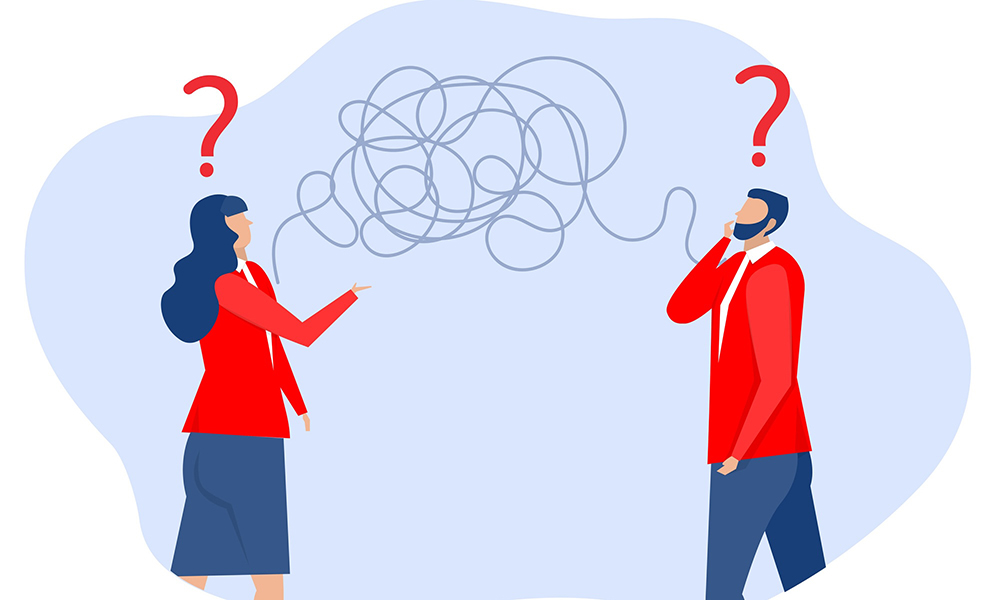“People will have to learn to smile with their eyes and voices, and to read the eyes and voices of others more”, Stanford psychologist Jeanne Tsai
With face masks becoming a way of life, like many of you, I have been finding it tough to communicate effectively. The mask muffles speech; I often struggle to understand the other person, as well as to get my own message across. Plus, with half the face covered, it’s challenging to read facial expressions properly.
At the same time, face masks are essential and here to stay. Wearing them improperly is not the solution. I’ve seen some people pulling it downwards or sideways while speaking, hence removing the critical barrier when it’s most required. Now in the sixth month of a worsening pandemic, this is definitely not the time to become casual and careless.
Rather than working around face masks, we must find ways to work with them, so we can continue to have meaningful conversations while still staying safe.
So, this week, my message focuses on how to communicate effectively in the era of face masks. Why has this seemingly minor change had such a big impact on our interactions? And how can we overcome these new limitations?
To start with, the hearing challenges are not a figment of imagination. Audiologists have demonstrated that wearing a face mask actually changes the sound waves that reach the ear. High-pitched tones can’t get past the physical barrier, making it tough to pick up on sounds like “f”, “sh” and “th”. With this loss of clarity, speech begins to sound muffled. Face masks also prevent lip reading, a severe blow for people with hearing loss. To a lesser degree, this also affects those with normal hearing – everyone relies on some amount of lip reading during face-to-face interactions.
Besides the lack of auditory clarity, facial expressions are also obscured. As a BBC article on this topic explains:
Since our earliest days, human beings have been incredibly attuned to reading the facial expressions of others. This ability likely conferred upon us an evolutionary advantage, Charles Darwin posited in his 1872 book ‘The Expression of the Emotions in Man and Animals’. Learning how to read emotions from a face could aid social interaction, reduce misunderstandings and help a group function efficiently and harmoniously for the greater good.
When smiles go undercover
Being the most expressive regions of the face, the mouth and eyes are critical channels of non-verbal communication. With face masks covering one of these two key areas, gauging the speaker’s emotional state becomes difficult. This is especially true when someone is trying to communicate happiness or friendliness, which are centred around the mouth region. (Several healthcare workers and service staff have tried to overcome this hurdle by adding happy-faced stickers or smiling photographs to their uniforms.)
At the same time, relying solely on the mouth region isn’t a fool proof strategy. For example, we don’t always smile when we’re happy – and conversely, just because we’re smiling doesn’t mean we’re happy! To make things even more interesting, there are different cultural rules in play. Some cultures celebrate smiling and see it as a sign of sincerity, while others view it with caution. In Russia, there is a popular proverb that translates as “smiling with no reason is a sign of stupidity”. And in Japan, where overt shows of emotion in public are frowned upon, there is more of an emphasis on smiling with the eyes. In fact, the Japanese even type smiles differently: ^_^ as opposed to :).
The eyes have it
One silver lining is that we still have unfettered access to the eye region. It’s said that the eyes are the window to the soul – a quote varyingly attributed to Shakespeare, Cicero and even the Bible. It’s not surprising that this sentiment cuts across cultures and time periods. After all, scientists believe that most people can recognise each other’s mental state by directing their attention to the eye region. This is also the premise of the Reading the Mind in the Eyes Test, commonly used to evaluate social intelligence. However, it’s important to note that while many people can accurately judge emotion by looking at the eyes, a significant portion of the population cannot. Also, the eyes may be partially obscured by spectacles or sunglasses, or the person may be looking at a screen while talking.
Communication is a package deal
In order to interpret facial expressions as accurately as possible, we need additional information: tone and pitch, body language, hand gestures and the context in which the interaction is taking place. Fortunately, we still have access to all of these! Those of us who are new to mask-wearing can also take comfort in the fact that millions of people have learned to communicate effectively despite face coverings. In parts of Southeast Asia and China, the use of face masks was widespread long before COVID-19, whether for hygiene purposes or to protect against pollution. In other cultures, it’s common for women to wear face veils in certain social settings. Of course, a veil has a very different meaning and purpose than a face mask, but the outcome is similar: since part of the face is covered, interactions are subtly altered.
To overcome the challenges created by face masks, we need to adapt both sides of our communication: speaking and listening. Here are five suggestions to help you interact more effectively:
1. Regulate volume and speed
When you’re trying to make yourself understood, there is a natural tendency to shout. Resist the urge to do so. Not only does it further distort your speech but it is also downright risky in the COVID-19 scenario. Continue to speak at your regular volume (or just slightly louder) and, instead, alter your rate of speech. Make a conscious effort to slow down and avoid rushing through your speech. Allowing more space between words increases clarity.
2. Follow up for clarity
Due to shyness or embarrassment, some people will nod along even if they can’t understand what you’re saying. Ask follow-up questions to make sure your message has been received. If there is still some ambiguity, follow up further with written clarification – a quick WhatsApp text or email. In general, adopt a strategy of over-communication.
Similarly, take steps to prevent misunderstandings when you’re in the role of listener. Paraphrase the message and say it back to the speaker. If you’re unable to understand their speech, ask them to repeat or rephrase. Try to be specific about the point you need clarified.
3. Focus on the eyes
In this era of selfie smiles and at-our-fingertips emoticons, we sometimes forget just how expressive the eyes can be. Somewhat ironically, now is the perfect time to power down our devices and rediscover the lost art of face-to-face conversation. Look directly at the other person’s eyes to pick up automatic clues about their emotions, and use your own gaze and eyebrows to convey your feelings – perhaps with slight exaggeration, if that feels comfortable.
4. Pay attention to non-verbal aspects
Communicating holistically is a great way to compensate for the barrier placed by face masks. Employ “paralinguistic elements” to support the meaning of your words, varying pitch and tone to match the message. Use hand gestures, posture and stance to accentuate your state of mind. For example, you can convey approachability by adopting an open posture with arms at your side, angling your feet and legs towards the person, and maintaining regular (but not continuous) eye contact. You could also use commonly understood actions like a thumbs-up, a shrug, waving or nodding to reinforce your words.
As a listener, too, these non-verbal elements are indispensable. Body language is a relatively easy way to read a person’s emotions and attitude. Crinkling around the eyes usually signals a genuine smile, crossed arms or legs could indicate defensiveness, while a clenched jaw is probably a sign of stress. If the other person is mirroring your body language, you can assume the conversation is going well.
5. Adjust for team members with hearing loss
For those with hearing loss, not being able to see the speaker’s mouth presents severe difficulties. Reading lips is a key component of understanding, even for people who communicate via sign language. With face masks becoming the norm, people with hearing loss face the very real risk of exclusion. If anyone in your team or department has hearing loss, consider the usage of transparent face masks for in-person interactions.
Another handy aid is a speech-to-text app, a technology that has advanced a lot in the last few years. While it can’t yet replace speech entirely, it’s definitely a good tool to have on hand for people with varying degrees of hearing loss. Another way to double-check key details, especially in a noisy setting or when you’re interacting with someone through a plastic partition, is to quickly jot down the facts on your phone and show them the screen.
Face masks are disrupting the ways in which we connect and interact. So far, this topic hasn’t received much attention yet. However, there are several practical ways to overcome these challenges. Let’s keep these in mind as we move forward, so that all of us can find our way back to communicating effectively with one another.








Comments